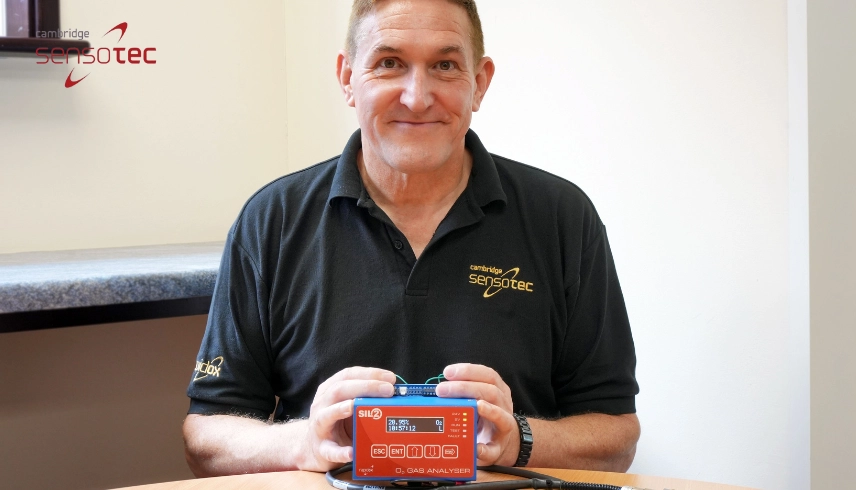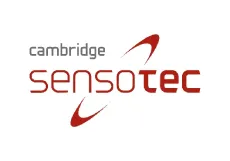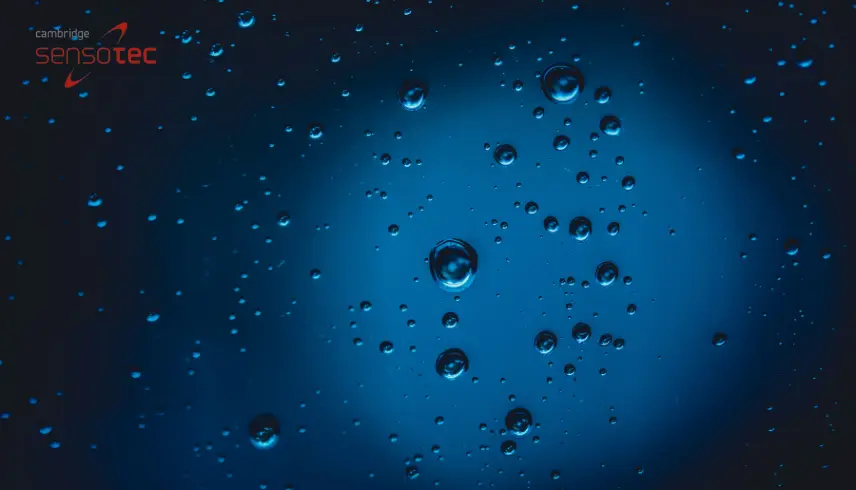

How is Helium Measured?
Introduction
Helium is one of the most fascinating and versatile elements in the periodic table. Known for its unique properties, it plays an essential role in a broad range of industries, from aerospace to healthcare and semiconductor manufacturing.
However, its precise measurement is crucial for ensuring safety, efficiency, and accuracy in its applications. In this article, we’ll explore helium’s properties, why accurate measurement is vital, and the advanced techniques used to measure helium.
Finally, we’ll highlight how Cambridge Sensotec has positioned itself as the leading authority in helium measurement, offering state-of-the-art solutions tailored to diverse industrial and scientific needs.
What Makes Helium Unique?
Helium’s Physical and Chemical Properties
Helium, with the atomic symbol He, is the second lightest and second most abundant element in the universe, following hydrogen.
It is an inert, colourless, odourless gas that exhibits several unique characteristics:
- Extremely Low Boiling Point: Helium has the lowest boiling point of any element at -269°C (4.2 Kelvin), making it invaluable in cryogenics.
- Non-Toxic and Non-Flammable: Its inert nature makes it safe to handle under controlled conditions.
- High Thermal Conductivity: This property is essential for applications such as thermal conductivity analysis and heat transfer systems.
Industrial and Scientific Applications of Helium
Helium’s unique properties lend themselves to various applications:
- Cryogenics: Used in MRI machines and particle accelerators due to its ultra-low boiling point.
- Leak Detection: Helium’s small atomic size and inertness make it ideal for detecting leaks in pipelines, vacuum systems, and industrial equipment.
- Welding and Manufacturing: Helium creates inert atmospheres, essential for welding and semiconductor manufacturing.
- Rocket Propulsion: Pressurising rocket fuel tanks and purging systems.
- Medical Use: Blended with oxygen to create breathable mixtures for patients with respiratory conditions.
Safety Considerations
Although helium is non-toxic, it can pose safety risks under certain conditions:
- Asphyxiation: In confined spaces, helium can displace oxygen, creating a suffocation hazard.
- Cryogenic Risks: Contact with liquid helium can cause severe frostbite.
Why Accurate Helium Measurement Matters
Accurate helium measurement is critical across various industries for several reasons:
Optimising Industrial Processes
Applications like leak detection, cryogenics, and rocket propulsion require precise helium measurement to ensure operational efficiency. In semiconductor manufacturing, even trace impurities can compromise product quality, making accurate measurement vital.
Scientific Research
In research environments, such as particle physics or cryogenic studies, controlling helium levels is crucial to maintain the integrity of experiments.
Researchers rely on precise measurements to replicate results and ensure consistency.
Ensuring Safety and Compliance
Monitoring helium concentrations in confined spaces and industrial processes is essential for maintaining workplace safety.
Accurate measurements help industries comply with safety regulations and prevent incidents.
Techniques for Measuring Helium
Helium measurement can be accomplished using several advanced methods, each suited to specific applications and levels of accuracy:
1. Gas Chromatography (GC)
Overview:
Gas chromatography separates the components of a gas mixture to measure helium concentrations.
A gas sample is injected into the chromatograph, where it passes through a column that separates its components based on their physical and chemical properties.
Advantages:
- Highly accurate and precise.
- Capable of detecting trace amounts of helium.
Applications:
Used in laboratories and industries where high accuracy is required, such as environmental monitoring and quality control in gas production.
Limitations:
- Requires specialised equipment and expertise.
- Slower than some other methods.
2. Thermal Conductivity Analysis (Katharometry)
Overview:
This method uses helium’s high thermal conductivity to measure its concentration in a gas mixture. A katharometer typically consists of two chambers: one with pure helium (reference gas) and another with the sample gas.
The thermal conductivity difference between the two chambers is measured and converted into a helium concentration value.
Advantages:
- Highly stable and reliable.
- Portable and easy to use for field applications.
Applications:
Widely used in leak detection, breathing gas analysis, and industrial monitoring.
Limitations:
- Accuracy depends on the stability of temperature and pressure conditions.
3. Mass Spectrometry
Overview:
Mass spectrometers ionise the gas mixture and separate its components based on mass-to-charge ratios.
Helium’s unique mass allows for precise identification and quantification.
Advantages:
- Extremely accurate, even for trace levels of helium.
- Suitable for complex gas mixtures.
Applications:
Used in high-precision applications such as atmospheric studies, research labs, and leak detection in sensitive equipment.
Limitations:
- Expensive and requires specialised equipment and expertise.
4. Ultrasonic Sensors
Overview:
This method measures the speed of sound in a gas mixture, which depends on its composition and temperature.
Since helium has a significantly different speed of sound compared to other gases, its concentration can be estimated.
Advantages:
- Cost-effective and easy to use.
- Suitable for quick, on-the-spot measurements.
Applications:
Commonly used for industrial monitoring and quality control.
Limitations:
- Less accurate than gas chromatography or mass spectrometry.
- Requires compensation for temperature and pressure variations.
5. Pressure Measurement and Ideal Gas Law
Overview:
Helium concentration can be estimated by measuring the pressure of the gas mixture and using the ideal gas law to calculate the number of moles of gas present.
Advantages:
- Simple and inexpensive.
- Does not require advanced equipment.
Applications:
Used in scenarios where high accuracy is not critical, such as rough estimates in industrial setups.
Limitations:
- Low accuracy.
- Sensitive to temperature and volume variations.
Cutting-Edge Advances in Helium Measurement
Speed of Sound Technology
Modern instruments are integrating speed of sound technology with advanced algorithms to improve accuracy and reliability.
These systems can measure helium concentrations in real-time, even in dynamic conditions.
Multi-Gas Analysers
Next-generation multi-gas analysers can simultaneously measure helium, oxygen, nitrogen, and other gases.
These devices are especially useful in complex environments like breathing gas analysis for technical diving or industrial gas production.
Real-Time Monitoring Solutions
Continuous monitoring systems are being developed for real-time helium measurement in industrial applications. These systems enhance safety and operational efficiency by providing instant feedback on helium levels.
Cambridge Sensotec: The Authority in Helium Measurement
At Cambridge Sensotec, we pride ourselves on offering cutting-edge solutions for helium measurement.
Our advanced analysers and monitoring systems are trusted across industries for their precision, reliability, and user-friendly designs.
Innovative Product Range
Cambridge Sensotec provides a wide array of instruments tailored to diverse applications:
- Portable Analysers: Ideal for on-site helium measurement.
- Fixed Monitoring Systems: Designed for continuous monitoring in industrial settings.
- Custom Solutions: Tailored instruments to meet specific client requirements.
Why Choose Cambridge Sensotec?
- Unparalleled Accuracy: Our devices ensure precise helium measurements, even in challenging environments.
- User-Friendly Designs: Intuitive interfaces make operation straightforward.
- Commitment to Safety: Built-in safety features ensure secure operation across all applications.
Applications of Helium Measurement with Cambridge Sensotec
Cambridge Sensotec’s solutions cater to a broad spectrum of industries and use cases, including:
- Leak Detection: Ensuring system integrity in pipelines, vacuum chambers, and industrial equipment.
- Medical Use: Monitoring helium levels in MRI systems and breathing gas mixtures.
- Industrial Processes: Quality assurance in helium-dependent operations like semiconductor manufacturing and welding.
Conclusion: The Essential Role of Helium Measurement
Key Takeaways
- Helium’s Unique Properties: Its inertness, low boiling point, and high thermal conductivity make it invaluable across industries.
- Measurement Techniques: Methods like gas chromatography, thermal conductivity analysis, and mass spectrometry provide accurate helium measurements tailored to specific needs.
- Advanced Technologies: Innovations like multi-gas analysers and real-time monitoring are transforming helium measurement.
- Cambridge Sensotec’s Expertise: With cutting-edge solutions, Cambridge Sensotec is the go-to authority for precise and reliable helium measurement.
Contact Cambridge Sensotec for Your Helium Measurement Requirements
Accurate helium measurement is critical for safety, efficiency, and compliance.
At Cambridge Sensotec, we are committed to delivering state-of-the-art solutions to meet your needs.
Contact Cambridge Sensotec today to learn how our technologies can enhance your operations and provide unparalleled accuracy in helium analysis.
Together, we can achieve excellence in helium measurement.


